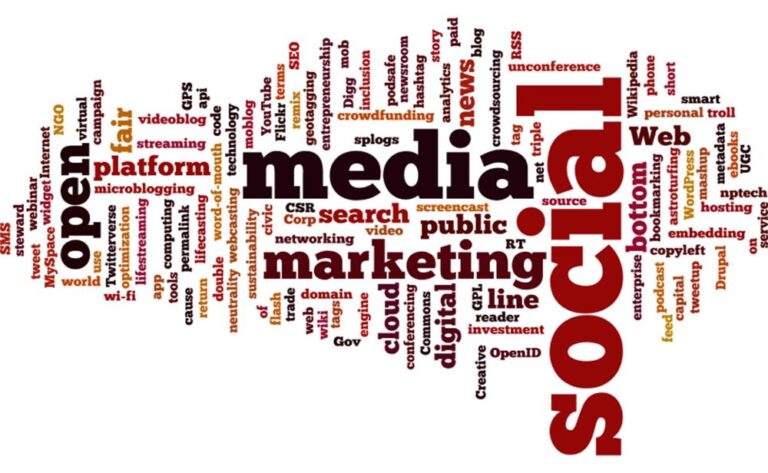Digital Marketing for Financial Services: 7 Strategies that Will Boost Results
A change in strategy for companies competing in the market for financial services could involve placing more emphasis on personalisation, mobile optimization, and client feedback.
It’s not your imagination if you’ve had the thought that consumer technology seems to be advancing at an ever-increasing rate on a daily basis; in fact, you’re not imagining things at all.
Because of the lightning-fast pace at which technology is advancing, consumers from all walks of life are seeing their purchasing decisions influenced in a variety of different ways.
Because of this, firms in virtually every sector have been working tirelessly to modernize and enhance their digital marketing tactics in order to keep up with the competition.
Nevertheless, businesses that focus on providing financial services have a propensity to lag behind in this regard, whereas other industries tend to steam ahead.
If this describes your organization in any way, it is high time that you reconsider your strategy before it is too late to make changes.
This article will provide a more in-depth look at why digital marketing for financial services is such a crucial aspect in the modern world, as well as how you can assist your firm in continuing to stay ahead of the curve.
What Benefits Does Digital Marketing Offer Businesses in the Financial Services Industry?
The day-to-day routines and preferences of modern customers are evolving as a direct result of the growing popularity of concepts such as mobile technology and online shopping.
People are increasingly opting to take care of an increasing portion of their essentials online. They aren’t merely using the internet to conduct their shopping or to keep in touch with their loved ones; in fact, they’re doing much more than that.
When people are more confident in their ability to work and operate digitally and remotely, they tend to have a higher level of faith in the technology that is involved.
Having said that, a significant number of customers increasingly favor the option of managing their funds and various accounts online.
They are conducting research on new goods and services via social media in the hopes of finding something that will also fulfill their requirements.
But some companies that provide financial services aren’t taking advantage of the opportunities presented by these shifts in the industry because they are:
• Slow to embrace social media marketing and the benefits of having a robust social media presence on major platforms.
• Failing to accurately estimate the speed at which positive or negative feedback from a client can spread over the internet and the number of people it could potentially reach.
• Failing to keep data management strategies up to date in order to better accommodate information obtained through interactions on social media platforms, customer activity on websites, and other sources of information in a similar vein.
• Failing to personalize sufficiently both the products and services they offer as well as the methods by which they communicate with their clients.
• Using potential assets, such as video marketing, to disrupt potential customers rather than to amuse or inform them. • Failing to make the most of email marketing and communications in order to maintain contact with existing customers.
If you are serious about remaining ahead of the competition, you can no longer ignore the impact of important elements such as internet word-of-mouth, tailored consumer outreach initiatives, and video marketing. These are all essential considerations.
Companies in the financial services industry who are successfully adapting to these developments are doing more than just entering new markets.
They are also better at living up to the expectations of their existing customers, which helps them keep those customers as customers.
What kind of changes are being brought about by the rise of digital marketing in the financial services sector?
The financial sector has been subject to more upheaval than most others in recent years, despite the fact that this is something that occurs periodically in virtually every industry.
Not only are companies that provide financial services struggling to navigate a market that is being impacted by significant political and economic issues, but the competition is also more intense than it has ever been.
Additionally, dynamic new businesses and technologically smart entrepreneurs are entering the finance industry with their own unique contributions.
They are collecting substantial percentages of the overall revenue growth, which means that veteran financial services organizations who are serious about remaining at the top have had to rapidly innovate in order to keep up.
Take a look at some of the ways in which the existing standards for digital marketing are going to continue to evolve for the financial services industry.
Increased Emphasis on Satisfying the Expectations of Customers
The expectation among consumers for experiences that can be accessed by them at any time and from any location is skyrocketing in today’s world, and this expectation is not confined to the streaming media business alone.
People have become accustomed to anticipating this from practically every service that they use, and this expectation extends to the banking, payment, and money management alternatives that they have selected.
Be on the lookout for this pattern to maintain its momentum in the years to come. You’ll notice its effect in slicker interfaces, faster service fulfillments, deeply tailored customer interactions, and other aspects of the customer experience.
Increased requirement for individualized participation
The days are long gone when the typical customer had only a handful of options to pick from when it came to financial services.
Instead, businesses in every sector are looking into methods to better meet the growing expectations of the typical consumer for services to be “always-on,” personalized, and limitlessly available.
And because consumers now have easier access to a wider variety of options, they are showing less loyalty to brands, which means that companies have to work more to keep their customers as customers.
The need to connect with customers on an aspirational level and win their trust by finding a strong balance between security and openness is being driven by this trend, which in turn is driving the need to engage with customers on an aspirational level.
Having said that, this must be done while ensuring that customers continue to have the easy, streamlined, and inventive experience that they have come to expect.
7 Crucial Pieces of Advice for Financial Service Providers Regarding Digital Marketing
When you think of animals who are patient and have a lengthy attention span, a goldfish is probably not the first thing that comes to mind.
You might picture a human being, but in all likelihood, you shouldn’t do that. This is due to the fact that the average attention span of a goldfish is nine seconds, which is actually one second longer than the average attention span of a modern person.
What exactly does this imply for you as a proprietor of a business?
It indicates that you need to become an expert at not only distinguishing yourself from the other competitors around you but also rapidly capturing the attention of a potential consumer before they click away.
To achieve this goal, improved digital marketing of financial services is essential; thus, the sooner you get started, the better off you will be.
The following are some choices that are quite efficient:
1. Prioritize dynamic, entertaining content
When it comes to pique the attention of the people in your target demographic, the old adage “content is king” is, more than ever before, highly accurate.
Not only is it beneficial for driving traffic, gathering leads, and converting customers, but a strong content marketing campaign has additional benefits as well.
It is an excellent approach to set your firm apart from the others as a proper industry expert, which is something that is very advantageous for financial companies.
However, the typical post about finance may be quite boring and difficult for non-specialists to understand, which is why originality is the key to producing interesting content that also produces results.
Create a content strategy that is unambiguous and serves your objectives.
Find a happy medium between being informative and being clear, or between being engaging and being informative.
2. Cultivate a robust social media presence
It’s not as much of an exaggeration as it might seem to suggest that virtually everyone of note in today’s world is active on at least one social media platform.
An estimated eight in ten people living in the United States make regular use of social media, devoting between four and five hours a day to exploring the platform’s myriad applications in their personal and professional life.
It’s true that individuals use social media platforms like Facebook, Twitter, and other profiles like these to keep in touch with loved ones and look at the most recent memes, but that’s not all they do with them.
Social media is becoming an increasingly popular resource for today’s consumers when it comes to assisting them in making shopping selections.
They are employing it in order to conduct product research, make contact with firms, and follow brands that are of interest to them.
One of the most effective marketing techniques you can implement right now is creating a profile that is appealing to users, populating your feed with relevant material, and engaging in conversation with clients through social media.
3. Make the most of the potential offered by multimedia
In spite of the fact that producing high-quality written content is, and will continue to be, a crucial component of any comprehensive digital marketing campaign, you should not ignore the importance of including multimedia.
The majority of people have an attention span of only eight seconds, and research has shown that this method is significantly more compelling and capable of capturing that span than other methods.
Info graphics are an excellent example of engaging visual content that can be found online.
They are especially simple to take in at a glance thanks to the use of quick-fire statistics and attractive, colorful images.
They are also precisely the type of content that people love to share, as nothing spruces up a Facebook or Twitter feed nearly as much as a good-looking graphic does.
Then there’s video, a continually developing trend that has been reshaping the landscape of marketing for some time now and demonstrates no indications of slowing down in its pace of transformation.
Did you know that more than eighty percent of millennials view videos as part of the process of deciding whether or not to make a purchase?
When you consider how many financial companies completely ignore video marketing, it’s easy to see why having a well-tailored YouTube channel or another option that’s analogous to it can be the best way to get the attention of a population that’s becoming increasingly crucial.
4. To strengthen connections with others, share anecdotes from your own life.
Consumers of today have higher expectations than in the past of the companies and brands they put their faith in.
When it comes to communicating with current and new clients, impersonal and cold approaches are no longer acceptable.
Sharp marketing materials aren’t enough to make people feel like they have a personal connection with the companies they do business with; they want to feel like they’re getting something more.
In its place, the mix should include interesting anecdotes to help increase engagement and establish rapport.
Is there a compelling tale hiding in the background of your choice to launch your own business?
Tell it, and make use of it to assist your customers in connecting with you on a more personal level.
Share finance-related anecdotes that are either useful or compelling, as well as your occasional hot opinions on happenings connected to your profession.
In a nutshell, you should not be afraid to let the human side of your company shine through, since this is an excellent method for a finance firm to differentiate itself from the competition and stand out from the crowd.
5. Encourage feedback from customers.
In the past, client reviews were considered nothing more than a nice perk to have; they were perceived as beneficial, but not necessarily important.
This is not the situation any longer.
Before making a final choice about a purchase, an astonishing 98 percent of shoppers say they first look at feedback left by other buyers on online review sites.
Reviews take on an even greater level of significance for financial institutions, as consumers increasingly look for further assurance when it comes to the products and services they will entrust with their money.
When it comes to the digital marketing of financial services, there is nothing more valuable than a positive review from a delighted and contented consumer.
On the other hand, a savvy business owner can find a way to turn even poor evaluations to their benefit.
Consider them an opportunity to demonstrate to clients how attentive, compassionate, efficient, and accountable your business is in meeting their needs.
Your consumers should be encouraged to share their experiences with your firm online, and you should interact with everyone who makes the effort to do so.
Customers who have already placed orders should be thanked for their business, and work should be done to address and rectify any issues raised by dissatisfied customers.
Online word of mouth travels at the speed of wildfire, so you should do everything in your power to ensure that almost everyone has something positive to say about your business.
6. Ensure that your site is compatible with mobile devices.
Those who only use computers to access the internet in order to make purchases are now in the minority. This is despite the fact that a significant number of individuals continue to record a large percentage of their online time on laptops or desktop systems.
The vast majority of individuals now use their mobile phones for at least some of their shopping and browsing needs, and 25 percent of all internet users only use their phones for those purposes.
It would be irresponsible of you to ignore that fact given your financial situation.
Ensure that the websites, blogs, and user interfaces for making purchases offered by your organization are optimized for mobile devices.
Imagine designs that are simple and uncluttered, pages that load in a flash, and navigation that is easy to understand.
Rework your marketing techniques so that you can connect with customers more effectively using mobile technology as well.
Again, if you don’t already have someone who is capable working on your team, it can be worth it to bring in an outside team of specialists in order to get the task done the right way.
7. Tailor the experience to each individual customer
These days, customers have higher expectations than simply having fast and uninterruptible access to the things they require from the companies providing those services.
They are accustomed to all of their favorite apps and brand offerings personalizing their experience to meet their particular requirements and interests at this time.
The providers of financial services could gain advantages by acting in the same manner.
People are very careful and conscientious about how they handle and administer their financial resources.
Despite this, many companies that provide financial services are still not utilizing data in an effective manner to personalize the shopping experience for customers.
A company that is able to successfully accomplish this to anticipate the needs of their ideal clientele and fulfill those needs stands a far better chance of outperforming its rivals.
It is essential that you customize your website so that it provides information and options that are pertinent to the location of each visitor.
Always keep this in mind, but especially while you’re working on optimizing your website for mobile use.
Wrap Up
Consumers of today have higher expectations (and demands) in every sphere of their lives as a result of the rapid advancement of technology.
They want to be able to work, play, and enjoy their favorite hobbies on their own terms, regardless of whether they are working or playing.
But in addition to that, people want to be able to manage their money, pay their bills, and purchase the products they require in this manner.
Especially in the financial services industry, service providers who are able to successfully adapt to customers’ wants and preferences have a substantial advantage over their rivals.
You should definitely review your plan for reaching out to customers and think about new ways to incorporate efficient digital marketing strategies for financial services into a more substantial component of your plans.
However, you should also make sure that you are ready to collect and organize the useful data you have so that you may use it in the pursuit of your goals.
You can assess and simplify how effective your various sales strategies are with the assistance of our convenient performance tracker.
Keep track of essential metrics such as email open rates, website traffic, and more in a single location that is straightforward and easy to use.







